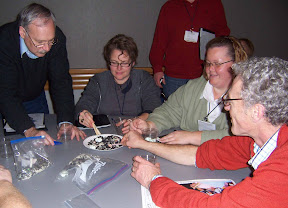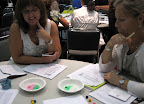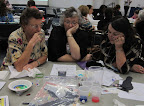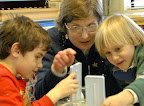Chemistry Now, week 3: molecule structure, properties
By admin
Posted on 2011-01-28

 As part of the weekly, online, video series “Chemistry Now,” NSTA and NBC Learn have teamed up with the National Science Foundation (NSF) to create lessons related to common, physical objects in our world and the changes they undergo every day. The series also looks at the lives and work of scientists on the frontiers of 21st century chemistry.
As part of the weekly, online, video series “Chemistry Now,” NSTA and NBC Learn have teamed up with the National Science Foundation (NSF) to create lessons related to common, physical objects in our world and the changes they undergo every day. The series also looks at the lives and work of scientists on the frontiers of 21st century chemistry.
This week, we’re looking at isomers, specifically carvone, and how a subtle change in molecular structure can have a profound effect on how the molecule functions; in the case of carvone, how it smells and tastes. The NBC Learn collection (linked below) also includes an NBC News profile of Oliver Sacks, author of “Uncle Tungsten: Memories of a Chemical Boyhood.” So we present week three’s offering, molecule structure, properties. View the video, try the lessons, and let us know what you think.
Video: “Mirror Molecule: Carvone” uses carvone, a chiral molecule, to explain how the “handedness” of a molecule can change its properties — in this case giving us the differing flavors of spearmint, caraway and dill. The video is located at the bottom right of the collection of resources.
Middle school lesson: the aim of this lesson is to give students an understanding that the three-dimensional structure of a molecule or “shape” plays a role in reactivity and chemical properties and therefore is relevant to science and technology industries.
High school lesson: in this lesson, students will learn about enantiomers and chirality and their influences on chemical reactivity.
You can use the following form to e-mail us edited versions of the lesson plans:
[contact-form 2 “ChemNow]

 As part of the weekly, online, video series “Chemistry Now,” NSTA and NBC Learn have teamed up with the National Science Foundation (NSF) to create lessons related to common,
As part of the weekly, online, video series “Chemistry Now,” NSTA and NBC Learn have teamed up with the National Science Foundation (NSF) to create lessons related to common,
Science "Qwiki"
By Mary Bigelow
Posted on 2011-01-27
 I’ve been following Qwiki in its beta form, and now it’s available to all. Qwiki is a multimedia resource with more than two million entries (so far). The entries are narrated (the text appears also) with illustrations and links to other related entries. After the brief introduction to a topic, additional topics and options are available.
I’ve been following Qwiki in its beta form, and now it’s available to all. Qwiki is a multimedia resource with more than two million entries (so far). The entries are narrated (the text appears also) with illustrations and links to other related entries. After the brief introduction to a topic, additional topics and options are available.
To use Qwiki, type a topic in the search box or select a topic from the featured topics. Here are a few science-related Qwikis:
The voice in the narrative appears to be computer-generated with some issues in pronunciation (e.g., desert animals as “dessert” animals). I’m sure there will be improvements to this alpha version, and there is a place for registered users to submit suggestions. I can see a lot of potential for the classroom, both as an informational tool and as a creative one.
 I’ve been following Qwiki in its beta form, and now it’s available to all. Qwiki is a multimedia resource with more than two million entries (so far). The entries are narrated (the text appears also) with illustrations and links to other related entries.
I’ve been following Qwiki in its beta form, and now it’s available to all. Qwiki is a multimedia resource with more than two million entries (so far). The entries are narrated (the text appears also) with illustrations and links to other related entries.
The limits of molecular learning
By Martin Horejsi
Posted on 2011-01-26
As the evening wore down and the hour hand moved north of the seven, my sixth grade daughter informed me she had a big science test the next day and needed help studying. She admitted confusion about some of the concepts, but half the assessment was a take-home essay test she needed to do now, and the other half would be a multiple-choice test taken tomorrow. With the textbook in hand, we launched into a review of minerals, rocks and the rock cycle.
Now I love the earth sciences as much as the next guy, especially having taught it for years, but the textbook was confusing to the point where I had trouble keeping the necessary facts straight. Its layout felt like an pop music video, jumping around, blurring factoids in picture captions, examples in sidebars, facts in text boxes within the text, and bold text stream-of-consciousness paragraphs that strung out geological terms like a clothesline filled with random laundry. Density, quartz, streak, metamorphic, intrusive. A previous assignment she had a few days earlier was nothing more than a large crossword puzzle. Now I see why.
At the 2009 NSTA conference, Arne Duncan‘s keynote mentioned, “You need to challenge yourselves and each other to move the curriculum beyond dinosaurs and volcanoes…”
I agree, and read “beyond” as to mean “in addition to, and not limited to.” But what if ‘beyond’ also addressed traditional teaching methods as well?
But I digress. Once the hour hand moved north of the nine and as we wrapped up the science study, my daughter mentioned that she had a book report due the next day as well just. But not to worry dad she said. “All I have to do is write it.”
While I was still recovering from the science book scavenger hunt, she motored forward and pulled out her Kindle3. Having downloaded the assigned reading to her e-reader, she had highlighted, notated and bookmarked all the parts she thought were important as she read it. Basically she interacted with the book by digitally “writing” all over it while she was reading it. Plus she had used the dictionary feature to look up any word for which she wasn’t clear on the meaning.
One click later and she had all her interactions with the book in one list. It was like a personal book search engine. Opening the first note, she began to write. Half an hour later it was printed, and worthy of an ‘A’ I might add. Her teacher thought so too.
Score: Digital 1 Molecules 0
Considering the events of the evening I couldn’t help but mentally mash together the two educational paradigms. What if the science textbook was as interactive as the literature book? What if I could step in and populate the text with my own pictures? What if teachers, parents, and students could modify or supplement the textbook to reflect the things they believe are important. What if there were strong textbook connections to the local area? If there’s one thing Montana (where I live) has plenty of, its rocks. But Montana rocks are rarely in the books except maybe for the museum showpiece we call Glacier National Park.
Open source learning in many forms has been around for the better part of this century, but lately its critical mass has pushed the concept into mainstream educational discussions. Schools and organizations are collaboratively designing their own “textbooks” and some have even served up the content onto the Internet for free download. It is not the just the advantaged districts that are pushing the envelope on this one, but there are those doing it out of need. And it is not just Americans. In fact, one of the more impressive and creative efforts in this genre that I know of is the Free High School Science Textbook (FHSST) project in South Africa.
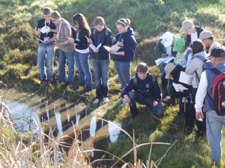
The appearance of free, editable math and science textbooks from South Africa is not surprising. When I was at a GLOBE Learning Expedition in Cape Town a couple years ago, there really was a duality where moments of the past mingled with visions of the future. Technology allows leapfrogging since change is rarely incremental. It is more a function of punctuated evolution where digital asteroids bombard education causing expansion in directions that did not exist a year earlier, and leaps in directions that did. It also helps when there are some dedicated venture capitalists who push the vision. Mark Shuttleworth a South African entrepreneur and space tourist, and the brainchild behind many free access ventures including one of my favorites, the Freedom Toaster, is one such individual. The Shuttleworth Foundation was also a major supporter of the GLOBE conference. I cannot help but wonder if pockets of innovation and creativity like the Freedom Toaster, scattered the sparks of problem solving and inspiration.
Out of curiosity, I downloaded one of the FHSST science texts and installed it on my Kindle2 and on my iPad. The Kindle presented it just like a regular .pdf, but I could not quickly magnify or shrink the text and graphics nor interact within the document with the reckless abandon that immersive learning demands.
On my iPad, I first loaded the text into my iBook library using the iTunes interface, but it wouldn’t open. I then used Safari (the built-in web browser on iPad) to download the textbook again. I loaded it into the .pdf area of the iBook interface. It was presented beautifully with the grace of movement and scaling the iPad is famous for. But sadly I could not write on the pages, nor change the content or add comment within the margins. Then I moved to a $2.99 app called GoodReader and downloaded the book again.
Although the GoodReader technology is not invisible (meaning your mind does not consider the tech while using it—like a phone or computer mouse), it did show significant promise in the direction I was looking. I could add notes—even on faux yellow stickies. I could draw on page, and I could bookmark pages. But I still could not load pictures into the text, but maybe when the iPad has a camera, it will be possible to embed pics directly into the document as they are taken (hint-hint in case any app developers are reading this).
I don’t know how this will work on the Android OS side not having an Android device, but learning often takes place with verbs and in spite of nouns. In other words, something will work, and the better or the worse is in the touch of the beholder.
And all the above occurred close in time to President Obama’s State of the Union speech. President Obama mentioned, “This is our generation’s Sputnik moment” which is a reference to a rather notable punctuation mark in the sentence we call science education.
Sputnik was a wakeup call to America that demanded a response. As our current “Sputnik moment” unfolds, I hope we can lead the way rather than just react or follow. And maybe a good place to start is to learn from our students.
As the evening wore down and the hour hand moved north of the seven, my sixth grade daughter informed me she had a big science test the next day and needed help studying. She admitted confusion about some of the concepts, but half the assessment was a take-home essay test she needed to do now, and the other half would be a multiple-choice test taken tomorrow.
The GBBC* is just weeks away!
By Peggy Ashbrook
Posted on 2011-01-25
*Great Backyard Bird Count, February 18-21, 2011
 Fifteen minutes is a long time by preschooler standards. And that is the minimum length of observation that can be submitted to the 14th annual Great Backyard Bird Count (GBBC), an annual four-day event led by the Cornell Lab of Ornithology and National Audubon Society, with Canadian partner Bird Studies Canada and sponsorship from Wild Birds Unlimited. For each type of bird you see, you just count the most you see at any one time (so you don’t accidentally count the same bird twice). To support the children’s sustained attention I bought some sand timers with times of 30 seconds, 1 minute, and 2 minutes. The children will pair up, one timer and one watcher, to count the birds they can see around the playground. Then we’ll report the numbers as instructed, the most of each species that was seen at any one time. It would be more exciting if we had a bird feeder to attract more species but we can usually count on (heh-heh) seeing mourning doves sitting on the overhead wires, a few House sparrows in the bushes, and a crow flying by.
Fifteen minutes is a long time by preschooler standards. And that is the minimum length of observation that can be submitted to the 14th annual Great Backyard Bird Count (GBBC), an annual four-day event led by the Cornell Lab of Ornithology and National Audubon Society, with Canadian partner Bird Studies Canada and sponsorship from Wild Birds Unlimited. For each type of bird you see, you just count the most you see at any one time (so you don’t accidentally count the same bird twice). To support the children’s sustained attention I bought some sand timers with times of 30 seconds, 1 minute, and 2 minutes. The children will pair up, one timer and one watcher, to count the birds they can see around the playground. Then we’ll report the numbers as instructed, the most of each species that was seen at any one time. It would be more exciting if we had a bird feeder to attract more species but we can usually count on (heh-heh) seeing mourning doves sitting on the overhead wires, a few House sparrows in the bushes, and a crow flying by.
 You can count at home too, and you can count from a window— “Your counting always counts!” Visit the Great Backyard Bird Count at www.birdsource.org/gbbc/ and learn how your students can contribute data. When a greater community contributes data, scientists have more information to use to understand bird behavior.
You can count at home too, and you can count from a window— “Your counting always counts!” Visit the Great Backyard Bird Count at www.birdsource.org/gbbc/ and learn how your students can contribute data. When a greater community contributes data, scientists have more information to use to understand bird behavior.
I’m going to participate in the GBBC again this year, February 18-21, in my subUrban backyard and will let you know what I see.
What’s in your (school’s) backyard?
Peggy
*Great Backyard Bird Count, February 18-21, 2011
Assessment
By Mary Bigelow
Posted on 2011-01-25
No—we’re not seeing double. The Science Teacher and Science Scope both have the same theme this month—a double dose of information and ideas on the topic of assessment. Whichever issue you get, I hope you look at the other one for additional ideas from our fellow science educators.
I love this cover image. It’s exciting in the classroom when the light bulbs go off as students understand a concept or perfect a skill. But this is obviously a metaphor—how do we really know when students understand? How can we measure or assess what they are learning?
Beyond Grading has examples of rubrics that the authors used for several student projects. The interesting part of the article is how the authors developed and field-tested the rubrics. Their references include Rubistar which is one of the best websites on the topic that I’ve seen and used. Assessment for Learning looks at formative assessment during problem-based and project-based learning. The authors include many examples of activities that can be used to guide student learning in a variety of learning environments. (Related SciLinks: Stem Cells)
Sometimes students have difficulty in expressing their understanding because they have a limited vocabulary. A Place for Content Literacy describes several vocabulary and comprehension strategies that can be incorporated in science instruction: brainstorming, categorizing, graphic organizers such as anticipation/reaction guides, and KWL charts.
Student attitudes, interests, and perceptions can influence their learning. The authors of The Affective Elements of Science Learning describe how they developed and field-tested a student questionnaire. They provide a copy of the instrument (see the Connections for this issue). If you have a clicker system, this would be even easier to implement and analyze the results.
The Concept Attainment Strategy has two examples of how to structure an inductive lesson that has opportunities for students to examine data and search for critical attributes. The author encourages students to use self-assessment as they progress through the activity. (Related SciLinks: Arthropods, Chemical Formulas)
In projects, students demonstrate how they can integrate and apply what they are learning in science and other subjects. How Much Carbon Is in the Forest shows how students have to do most of the work in order to learn. (Related SciLinks: Carbon Cycle)
A friend of mine is senior curator and lead zoologist at a local museum. He is a trained herpetologist, and the spotlight Career of the Month: Herpetologist captures what he does on a daily basis. I like his advice for students: Do not let anyone tell you that you should be following a profession that does not make you happy and satisfied. (Related SciLinks: Herpetology)
Related SciLinks to topics in Headline Science:
- Sea-Level Rise (SciLinks: Sea Level Change, Glaciers)
- Salmonella Test (SciLinks: Salmonella, Food Safety)
- Rapid Brain Adaptation (SciLinks: Human Brain)
- Volcanic Reawakening (SciLinks: Volcanoes also use “volcanic” as a search term for several other topics)
- Chromosome-Separating Machinery (SciLinks: Chromosomes)
Check out the Connections for this issue (January 2011). Even if the article does not quite fit with your lesson agenda, this resource has ideas for handouts, background information sheets, data sheets, rubrics, etc.
Flipping your classroom
By Eric Brunsell
Posted on 2011-01-25
February’s Science 2.0 column focuses on how you can transform your classroom by using video lectures. Check out these videos by two of the pioneers of this approach:
[youtube]http://www.youtube.com/watch?v=uHK_a9SuTIk[/youtube]
[youtube]http://www.youtube.com/watch?v=2H4RkudFzlc[/youtube]
More videos on flipping your classroom are available here.
Additional resources.
February’s Science 2.0 column focuses on how you can transform your classroom by using video lectures. Check out these videos by two of the pioneers of this approach:
[youtube]http://www.youtube.com/watch?v=uHK_a9SuTIk[/youtube]
[youtube]http://www.youtube.com/watch?v=2H4RkudFzlc[/youtube]
More videos on flipping your classroom are available here.
Additional resources.
Chemistry Now, week 2: cheeseburger chemistry—cheese
By admin
Posted on 2011-01-24
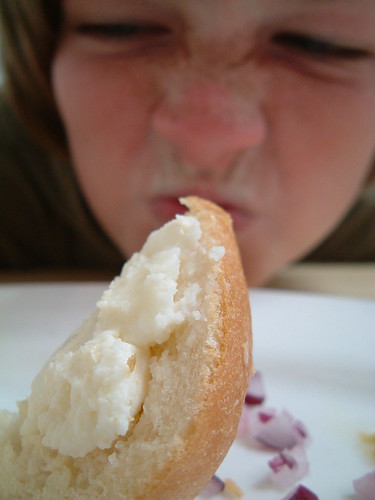 As we mentioned last week, NSTA and NBC Learn have teamed up with the National Science Foundation (NSF) to launch “Chemistry Now,” a weekly, online, video series that uncovers and explains the science of common, physical objects in our world and the changes they undergo every day. The series also looks at the lives and work of scientists on the frontiers of 21st century chemistry.
As we mentioned last week, NSTA and NBC Learn have teamed up with the National Science Foundation (NSF) to launch “Chemistry Now,” a weekly, online, video series that uncovers and explains the science of common, physical objects in our world and the changes they undergo every day. The series also looks at the lives and work of scientists on the frontiers of 21st century chemistry.
All in celebration of the International Year of Chemistry, which gets under way this Thursday, Jan 27th, at UNESCO Headquarters in Paris. If you happen to be there, and see some chemists presenting exciting science, send us pictures or comments. If not, we understand… the excitement of chemistry in your own classroom is simply too alluring.
Speaking of alluring, nothing is more beguiling than the scent of a good cheese. The stinkier the better. So we present week two’s offering, the Chemistry of Cheese. View the video, try the lessons, and let us know what you think.
Photo of girl scrunching her nose by Kaptain Kobold.
 Video: “The Chemistry of Cheese” (part of a 6-part Cheeseburger Chemistry series) uses cheese-making to explain protein denaturing, coagulation, and the difference between chemical and physical change. The video is located at the top left of the collection of resources.
Video: “The Chemistry of Cheese” (part of a 6-part Cheeseburger Chemistry series) uses cheese-making to explain protein denaturing, coagulation, and the difference between chemical and physical change. The video is located at the top left of the collection of resources.
Middle school lesson: in this lesson, students will blow up balloons using yeast, observe a chemical change, and investigate the variables that effect this chemical change.
High school lesson: through this lesson, students will observe a series of chemical reactions involving common kitchen chemicals, and use their observations to design and carry out an experiment to determine the identity of an unknown kitchen chemical.
You can use the following form to e-mail us edited versions of the lesson plans:
[contact-form 2 “ChemNow]
 As we mentioned last week, NSTA and NBC Learn have teamed up with the National Science Foundation (NSF) to launch “Chemistry Now,” a weekly, online, video series that uncovers and explains the science of common, physical objects in our world and the changes they undergo every day. The series also looks at the lives and work of scientists on the frontiers of 21st century chemistry.
As we mentioned last week, NSTA and NBC Learn have teamed up with the National Science Foundation (NSF) to launch “Chemistry Now,” a weekly, online, video series that uncovers and explains the science of common, physical objects in our world and the changes they undergo every day. The series also looks at the lives and work of scientists on the frontiers of 21st century chemistry.
Personalized professional development
By Mary Bigelow
Posted on 2011-01-21
 I am part of a team of elementary teachers (pre-K through fifth grade). Where can we find professional development (PD) in Earth sciences?
I am part of a team of elementary teachers (pre-K through fifth grade). Where can we find professional development (PD) in Earth sciences?
—Patricia, Houston, TX
I’m really excited you and your colleagues take an interest in Earth sciences. Students seem to be naturally interested in rocks, stars, weather, volcanoes, fossils, and other topics related to the world around them.
I’m seeing two strands in your question: improving your own content knowledge and finding resources (activities, materials, and so on) for teaching Earth science topics. Start by identifying a few content topics from your curriculum on which to focus your efforts, perhaps the ones in which you feel least confident or for which you need the most resources. If you and your team form a “study group,” you can organize your PD and share the content you’re learning, the resources you find, and the lessons you develop.
You’re fortunate to live in an area with many opportunities.
Check into graduate courses or workshops integrating content knowledge and teaching strategies from higher education institutions. For example, Rice University’s Department of Earth Science has outreach programs for educators. Other science organizations, such as the Houston Museum of Natural Science or Space Center Houston may also have programs that meet your needs.
But you’re not limited by location. Many institutions across the country offer content-focused online courses. For example, the American Museum of Natural History in New York City has a series of online courses for educators.
NSTA also has professional development resources, many available to all teachers. Science Objects are two-hour online interactive inquiry-based content modules that help teachers better understand the science content in several earth science topics (and they’re free):
- Earth, Sun, and Moon
- Earth’s Changing Surface
- Ocean’s Effect on Weather and Climate
- Solar System
- Rocks
- Universe
- Resources and Human Impact
- Plate Tectonics
SciPacks integrate these objects into a more formal “course.” A modest fee includes unlimited expert content help via email and a final assessment. Passing the final assessment produces a certificate from NSTA to document your understanding. There is also a component demonstrating how to connect the content with the classroom.
NSTA also sponsors online courses. Other free resources include podcasts and web seminars. “Attending” one gives you a year’s access to a SciGuide and a certificate of attendance.
If part of your plan includes finding Earth science lesson materials, the Learning Center also includes SciGuides—detailed lesson plans organized by grade level and topic. There is a small fee for these. Remember, NSTA members have access to current and archived articles from NSTA’s journals such as Science & Children and Science Scope.
NSTA’s SciLinks is a treasure chest of online resources. The websites have been vetted by a team of webwatchers—teachers who find and review relevant and appropriate sites for the collection. The sites for teachers include lesson plans and suggestions for the classroom. SciLinks can be searched by grade level and topic. The sites for older students can be useful for teachers who want to learn more about a topic.
Effective PD should be planned and purposeful, rather than a collection of unrelated events. Be sure your efforts align with your school or district’s PD plan. If you have requirements for continuing PD hours, find out how to make your work count, whether it’s a graduate class, a workshop, online activities, a group field trip, or independent study. Document your PD plan with the experiences in terms of the content you learned, the resources you acquired, the time spent, and your reflections on how you will use what you learned to help your students engage in high-quality learning activities. If your team does not have a formal plan, check out the Professional Development Plan and Portfolio tool in the NSTA Learning Center. This tool helps you create a plan and document your accomplishments.
Photo: MLB
 I am part of a team of elementary teachers (pre-K through fifth grade). Where can we find professional development (PD) in Earth sciences?
I am part of a team of elementary teachers (pre-K through fifth grade). Where can we find professional development (PD) in Earth sciences?
—Patricia, Houston, TX
I’m really excited you and your colleagues take an interest in Earth sciences. Students seem to be naturally interested in rocks, stars, weather, volcanoes, fossils, and other topics related to the world around them.
Conference sessions of great interest to early childhood teachers
By Peggy Ashbrook
Posted on 2011-01-20
The March 10-13, 2011 National Science Teachers Association’s national conference in San Francisco promises many good sessions for early childhood (preK-2) teachers as well as for the older grades. Take a look at the preliminary schedule on the NSTA conference website and read more about these sessions, just a few of the many offered:
(HINT: search for keywords such as “childhood”, “preschool”, “primary” and “kindergarten”)
Thursday, March 10
8:00–9:00 AM
- Budding Scientist
2:00–3:00 PM
- Newton’s Laws for Preschoolers…Who Knew?!
- Parents as Partners in a Dual Language After-School Program
3:30–4:30 PM
- An Online Assessment Tool for Preservice Early Childhood and Elementary Students
Friday, March 11
8:00–11:00 AM
- SC-10: The Young Scientist: Engaging Three- to Five-Year-Old Children in Science (Ticketed Event)
9:30–10:30 AM
- Mathematically Rich Preschool Environments as the Foundation for Scientific Inquiry
11:00 AM–12:00 PM
- Creating Scientific Drawings and Recordings with Kindergartners
- NSTA Press Session: Picture-Perfect Science K–4
3:30–4:30 PM
- Learning, Teaching, and Science Curricula in Preschool Contexts
Saturday, March 12
8:00–9:00 AM
- BLOCKS Presents: Let’s Talk Dirt!
- Small Children and Inquiry-based Science: A Reggio Emilia Approach
- You Can’t Catch ME! I’m the Gingerbread Man! Developing Science-based Units Using Children’s Literature
9:30–10:30 AM
- Blocks Presents: Little Hands Making Big Moves in Science
11:00 AM–12:00 PM
- Getting Started with Farm to School Projects: Teaching Across the Curriculum and Fighting Childhood Obesity
- Young Learners Meet the Scientific Process
- K–12 Multiculutral Share-a-Thon
2:00–3:00 PM
- Exuberant Exploration: Creating a Strong Preschool Science Program
- They Weren’t Teaching Science!
3:30–4:30 PM
Notice and Wonder: An Exploration of Inquiry for Preschoolers
- Science, Technology, and the Northern Ohio and Erie Canal
Sunday, March 13
8:00–9:00 AM
- Advantages of Open-ended vs. Directed Activities
- Exploring the Myth of “The” Scientific Method
- Inside the Body: The View from Grades K–3
9:30–10:30 AM
- Thinking BIG, Learning BIG: Connecting Science, Math, Literacy, and Language in Early Childhood
- Using Notebooks to Enhance Science Skills
11:00 AM–12:00 PM
- Designing Lessons to Impact Environmental Identity Development in Children
- The Language of Science: “I See What You Mean”
- How Do You Engage Minority Families in Science Education?
- Fight Bac! Integrating Food Safety into Your Elementary Classroom
- Flutter and Float
Tell us about your best ever conference session, or one that you are presenting at a conference this year. What should we look for in planning our conference schedule?
Peggy
The March 10-13, 2011 National Science Teachers Association’s national conference in San Francisco promises many good sessions for early childhood (preK-2) teachers as
Chemistry Now, week 1: chemistry of water
By admin
Posted on 2011-01-19
 In celebration of the International Year of Chemistry, NSTA and NBC Learn have teamed up with the National Science Foundation (NSF) to launch “Chemistry Now,” a weekly, online, video series that uncovers and explains the science of common, physical objects in our world and the changes they undergo every day. The series also looks at the lives and work of scientists on the frontiers of 21st century chemistry.
In celebration of the International Year of Chemistry, NSTA and NBC Learn have teamed up with the National Science Foundation (NSF) to launch “Chemistry Now,” a weekly, online, video series that uncovers and explains the science of common, physical objects in our world and the changes they undergo every day. The series also looks at the lives and work of scientists on the frontiers of 21st century chemistry.
“Chemistry Now” consists of 32 learning packages that aim to break down the chemistry behind things such as cheeseburgers and chocolate or soap and plastics. NSTA is developing middle and high school lessons to accompany each learning package. A new topic will be explored each week starting in January and running through May. The series will then resume in the fall of 2011 to keep pace with the academic school year, and the series is available cost-free on www.NBCLearn.com and www.NSF.gov.
NSTA will also post portions of each package in this blog, under the Chemistry Now category, and we hope readers will try them out in the classroom and leave comments below each posting about how well the information worked in real-world classrooms. And if you had to make significant changes to a lesson, we’d love to see what you did differently, as well as why you made the changes. Leave a comment, and we’ll get in touch with you with submission information.
Now, to the week one offering, the Chemistry of Water.

Victorian-era drawing of three fairies holding hands, to depict the number and arrangements of atoms in the water molecule; illustration published in children’s science book “Real Fairy Folks: Explorations in the World of Atoms” by Lucy Rider Meyer (1887). From the collections of the Chemical Heritage Foundation.
Video: “Water: H2O Molecules Made Clear” explains the structure, polarity, cohesive and adhesive properties that makes H2O a chemical essential for life. The video is located at the top right of the collection of resources.
Middle school lesson: the purpose of this lesson is to give students an understanding of water’s density as a liquid and solid.
High school lesson: this lesson will help students understand water’s polarity by examining its Lewis dot structure, discussing the strength of the covalent bonds, and performing a class experiment.
You can use the following form to e-mail us edited versions of the lesson plans:
[contact-form 2 “ChemNow”]
 In celebration of the International Year of Chemistry, NSTA and NBC Learn have teamed up with the National Science Foundation (NSF) to launch “Chemistry Now,” a weekly, online, video series that uncovers and explains the science of common, physical objects in our world and the changes they undergo every day. The series also looks at the lives and wor
In celebration of the International Year of Chemistry, NSTA and NBC Learn have teamed up with the National Science Foundation (NSF) to launch “Chemistry Now,” a weekly, online, video series that uncovers and explains the science of common, physical objects in our world and the changes they undergo every day. The series also looks at the lives and wor





